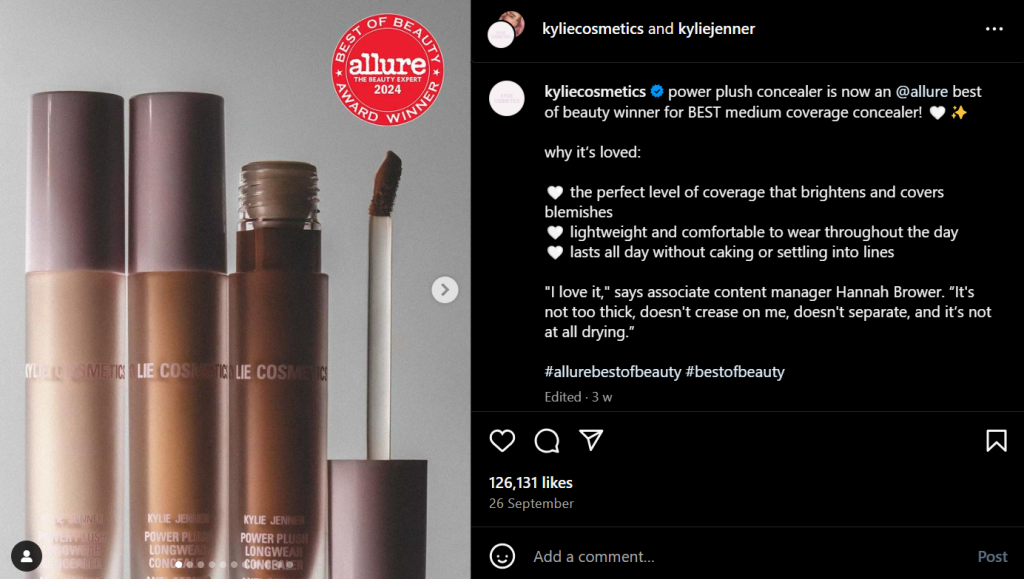The two-step flow theory, introduced by Paul Lazarsfeld and Elihu Katz in the 1940s, revolutionised our understanding of media influence. This model asserts that mass media messages do not directly influence the general public but rather flow through opinion leaders. In the context of modern pop culture, celebrities have assumed the role of these opinion leaders, displaying significant power over consumer behaviour through endorsements.
Celebrity Endorsements and Opinion Leadership.
Nowadays, celebrities serve as key figures in shaping public opinion and consumer choices. Whether through Instagram posts or interviews, their actions and recommendations have the potential to reach vast audiences. These individuals represent the opinion leaders in the two-step flow theory, filtering and interpreting media content for their followers, who trust their judgement.
For example, the British actor Daniel Craig’s long-standing association with Omega watches illustrates how celebrity endorsements can reinforce brand identity and consumer trust. Omega’s partnership with Craig, who plays James Bond, aligns the brand with the sophistication and charm associated with the character, enticing consumers to associate the product with these qualities. As an opinion leader he influences his followers, who admire his work and lifestyle. In this way, the media’s messages about Omega watches flow through Craig to his fans.
The Role of Social Media in Amplifying Celebrity Endorsements
Social media has transformed the way celebrity endorsements operate, providing a direct channel between celebrities and their followers. Social media platforms enable celebrities to promote products in real time, often creating the perception of a more personal and authentic recommendation.
Kylie Jenner, whose influence over beauty trends has reshaped the cosmetics industry, promotes her own brand, Kylie Cosmetics, through Instagram, which has resulted in millions of sales. Jenner’s posts, which often showcase her using the products, offer followers an aspirational lifestyle that they can emulate by purchasing her products (chic and expensive lifestyle). In this case, Jenner acts as the key opinion leader, with media messages about Kylie Cosmetics passing through her directly to her followers, encouraging them to buy into her brand.
Case Study: Celebrity Endorsements and Ethical Concerns
However, celebrity endorsements are not without their challenges. Consumers are increasingly sceptical of the authenticity of endorsements, particularly when it comes to issues of transparency and ethics. An example of this is the backlash faced by several influencers who promoted the Fyre Festival, a luxury music festival that turned into a disaster. Celebrities like Kendall Jenner and Bella Hadid were paid significant amounts to endorse the event, which ultimately failed to deliver on its promises. When attendees arrived to find poor conditions, the influencers were criticised for their involvement in what was perceived as a scam. “Bella Hadid, one of the models who took part in the promotions, later apologised to her followers and said she had “trusted” the event would be “amazing and memorable”.– BBC News (2019).
Conclusion
“The persuasiveness of a celebrity endorsement largely depends on how much the consumer likes and identifies with the celebrity”
(Silvera & Austad, 2004, p. 1515).
In today’s pop culture, celebrities act as modern-day opinion leaders, shaping consumer choices through endorsements that range from luxury fashion to technology. While celebrity endorsements can be powerful tools in influencing consumer behaviour, they also carry risks, particularly regarding authenticity and ethical concerns. As consumers become more media-savvy, the trust between celebrities and their audiences will continue to play a pivotal role in the effectiveness of endorsements.
References
BBC News (22 January, 2019). ‘How Kylie Jenner became the world’s youngest self-made billionaire’, BBC News.
Silvera, D.H. and Austad, B. (2004). Factors predicting the effectiveness of celebrity endorsement advertisements. European Journal of Marketing, 38(11/12), pp.1509-1526.




I think this blog shows great insight on the two-step flow theory and how it can connect to celebrity influence. I liked how connections were also made to celebrities selling product. Furthermore, I liked how the blog also demonstrated ethical concerns within celebrity endorsements, because it is important to remember that while influential, celebrities do not always have all the correct answers. Overall, I really enjoyed reading this blog and it gave me further information on how the two-step theory can be applied to the concept of celebrity.
This blog does a great job explaining how celebrities influence our opinions using the two-step flow theory. The examples are relatable, and the inclusion of both positive and negative impacts adds depth. Exploring the role of smaller influencers could make it even more relevant to today’s media landscape.
You did a good job of talking about the Two Step Flow Theory and linking it to how celebrities serve as key figures or what they post on their social media and how this can shape public opinions . You also gave good examples of how celebrity endorsements can help with brand identity and create consumer trust.
I agree with you people are more likely to be influenced by people they look up to, then if the product is good. Katie price is a celebrity who became so famous in 2004 her for looks and personality that she was being offered to have her own brands for make up and perfume products, The problem is however it’s great for millions of sells , but a celebrity can over shadow a brand. As a result of this people could focus on the celebrities more then the product.
I really like this your post, especially your typography and layout, which is something I need to learn. It’s very simple and clean but unlike others, your pictures and text are side by side which makes your blog comfortable to view. It’s like reading a magazine there’s a disciplined aesthetic to it. And what I really like about your blog is that you have a good title that tells the point clearly and at the same time is very relevant to people’s lives. The issue is detailed and appealing to people , when I saw it I would be curious as to why and thus read your post carefully. Also I like the examples you gave, they are real and easy to understand. I’m also in favour of your point that due to the sheer volume of information, people often rely on opinion leaders to sift through and interpret information. They may believe that if an opinion or information is recognised or promoted, then it has more credibility. This blog explores the role of celebrities in shaping public perceptions and consumer behaviour, but also identifies problems. I think it seems that the bigger challenge now facing the two-step flow theory is distinguishing whether or not this opinion leader is qualified and trustworthy.
One last tip: the formatting of your references in the right half of the subheadings looks a lot like unfinished body text, maybe you could try to make the formatting more regular next time. Cheers~